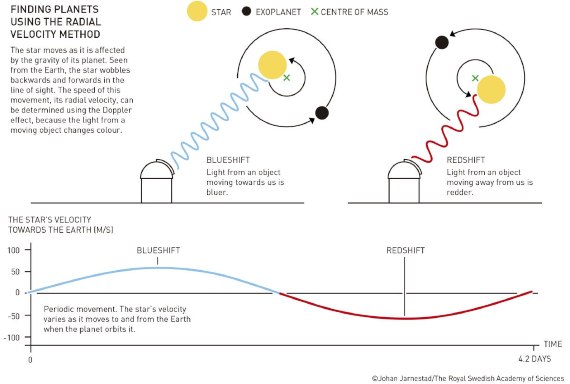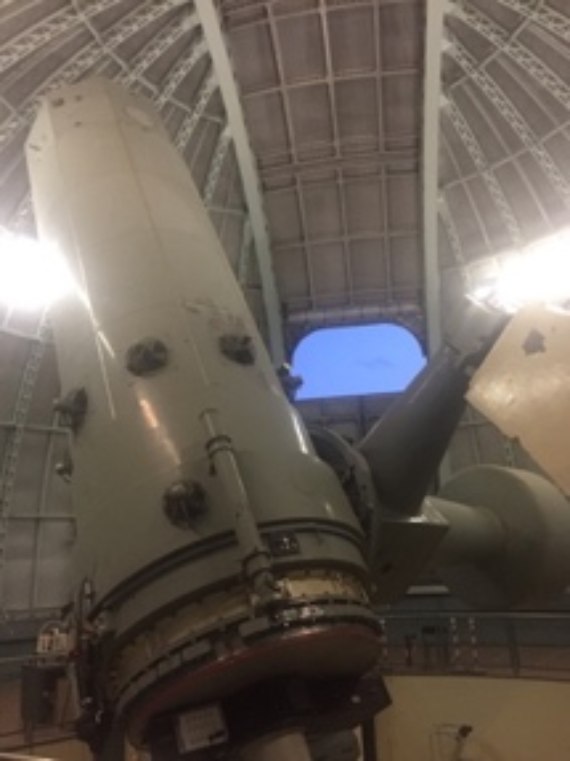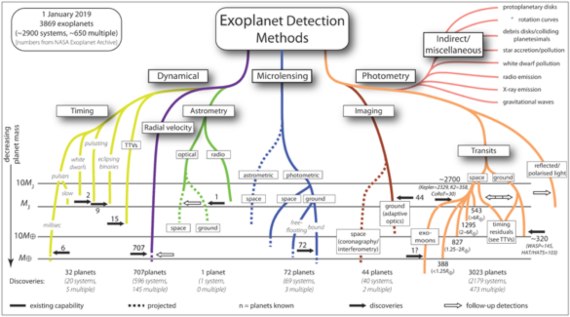A Brief History of Humankind’s Place in the Universe
It is highly probable that the first philosophical treatise written, entitled On Nature, can be attributed to Anaximander of Miletus (ca. 610 BCE – 547 BCE). Among many other novel ideas, he (possibly) proposed the existence of an infinity of worlds1:
“Anaximander said that the apeiron was solely responsible for the coming-to-be and the passing-away of the universe. He states that the various heavens have been secreted out of this apeiron, as more generally have been all the worlds, which are infinite in number.”
However, this plurality of worlds was not more generally accepted, and the prevailing idea was an essentially antropocentric geocentrism, even after the Copernican Revolution of the 16th century, which supplanted Earth from its supposed central position. And, even after the condemnation of Giordano Bruno.
This perspective began to change in the 18th century. Isaac Newton — in his General Scholium, appended to the second edition of his treatise Principia Mathematica published in 1713 — propounded that the stars could have planetary systems similar to the Sun. In the 19th century, several attempts to detect this diversity of planets were made using astrometry, which involves measuring a wobble that would be produced on a star with planets, given that both objects, according to Newton’s Universal Law of Gravitation, orbit around a common center of gravity. Unfortunately, both technical limitations and the remote distance of the stars — implying a minuscule, barely discernible displacement in the celestial sphere, or more plainly, a hard-to-see wobble — caused these attempts to identify verifiable planets to fail.
A century later, with the availability of more accurate instrumentation, several authors published works describing the potential presence of planetary companions orbiting nearby stars. Examples include the binary system 61 Cygni, 11 light years away fromour Sun with a possible companion planet of 17 Jupiter masses orbiting it once every 4.9 years (announced in 1944) and Barnard’s star, located 5.9 light years away and would have a purported two planets of similar mass to Jupiter with orbital periods of 12 and 26 years (works published in 1963 and 1969). The existence of these planetary systems was refuted by subsequent analysis.
As an alternative to astrometry for detecting planets, Otto Struve proposed using the variations in radial velocity resulting from the Doppler effect (see figure 1), or the eclipse the planet would cause when transiting in front of the stellar disk. He postulated on the existence of planets completely different to those in the solar system: massive and hot due to their proximity to their suns. There are advantages and disadvantages to both techniques: without knowing the angle of the planet’s orbital plane, radial velocity will only provide a planet’s minimum mass; whereas planetary transits provide a correlation between the star and the planet’s radii and the angle of the orbit, but it does not provide their masses. As if that were not enough, in order to observe a planetary transit, the planet’s orbital plane must have a very specific orientation to Earth, the probability of which is very low. Fortunately, the combination of the two methods, when feasible, provides a complete solution and allows for an accurate description of the planet’s orbit and generic features.

Credit: Johan Jarnestad/The Royal Swedish Academy of Sciences
In the decades following Struve’s hypothesis, the radial velocity technique was used to look for planets similar to those in the Solar system. These planet-finding efforts were further complicated by the fact that by their nature they lasted years and they required precision spectrographs, which are difficult to keep stable over long periods of time.
In 1988, a team led by Bruce Campbell using measurements taken over the course of six years discovered that the star, Gamma Cephei A, showed radial velocity variations in its orbit, possibly due to the presence of a low-mass companion (article here). The planetary nature of this candidate with an orbit of 2.48 years, was ostensibly confirmed in 2003 by Artie P. Hatzes and his colleagues. A more complete, subsequent analysis that used astrometry to determine the angle of the orbit, established that the mass of the companion stood at a range of between 5.0 and 26.9 Jupiter masses and that its distance to the star (known as the semi-major axis) would be 2.05 astronomical units. These measurements leave the possibilities open: the companion can either be a true planet or a brown dwarf, an object that looks like a star but that does not have sufficient mass to reach the interior pressure and temperature needed for it to initiate the thermonuclear fusion that converts hydrogen into helium, producing the energy a star emits.

A year later, David Latham and colleagues, including Michel Mayor, presented evidence for the presence of a low mass companion orbiting HD114762, a star somewhat hotter than the Sun. Because they used the radial velocity method, they were only only able to derive a minimum mass value, equivalent to 11 times the size of Jupiter. The authors themselves cautioned that: “… the rather low velocity amplitude of about 0.6 km s-1 implies that the mass of the companion may be as low as 0.011 solar masses, or 11 Jupiter masses. This leads to the suggestion that the companion is probably a brown dwarf, and may even be a giant planet. However, because the inclination of the orbit to the line of sight is unknown, the mass of the companion may be considerably larger than this lower limit.” In fact, Flavien Kiefer’s 2019 research study using astrometric data from the European Gaia satellite revealed that the companion would have a mass of .11 solar masses, 10 times Latham’s lower limit, and therefore would be a late spectral star.
Another candidate was confirmed years later, in 2006, confirming work undertaken by Artie Hatzes and William Cochran in 1993 while they studied Pollux, a giant star that is also the brightest in its constellation. Although they had speculated about the possible presence of a planet, in their study they concluded that the signals they observed were due to pulsations intrinsic to the star. We now know that, indeed, it is a planet.
In 1992, Alexander Wolszczan and Dale Frail announced the discovery — using a completely different technique — of two planets of a mass similar to Earth’s orbiting the pulsar PSR 1257+12. This discovery relied on a methodology called pulsar timing, which consists of very precisely timing signal variations that reach us from appropriately-positioned neutron stars. Neutron stars (pulsars) are the remnants of stars that have exploded and have a mass greater than the Sun’s. This was the first confirmed discovery of a planet outside the solar system. Despite its exotic nature, orbiting around an extreme stellar object, it failed to answer the principle question: Is our solar system unique? The answer was to be found with new developments in instrumentation.
Techniques and instruments: high resolution spectrographs and radial velocity curves
Refracting (using lenses) and reflecting (using mirrors) telescopes have different focal points, where the light focuses and where different kinds of instruments can be placed. Those instruments designed to take images are usually placed at the primary focal point (the primary focus), in front of the primary mirror, whereas spectrometers are placed after the Cassegrain focus, behind or at the Nasmyth focus, lateral to or at the Coudé focus where the light reaches after being reflected various times in strategically placed mirrors.
The evolution of modern spectrographs2 has occurred in multiple steps. In 1666, Isaac Newton used a prism to break the sun’s light down into its primary elements, its spectrum. In 1802, William Wollaston observed a number dark lines in the solar spectrum, features that were mapped in more detail by Joseph von Fraunhofer in 1815. These lines are produced by different chemical elements on the surface of our star, the Sun. The first detailed spectrum of the Sun was drawn by Anders Ångström in 1868. The analysis of the lines present in the solar spectrum gave rise to both spectroscopy — a term coined by William Huggins in 1870 — and astrophysics as a science. It was Henry Draper (responsible for the term spectrograph) who two years later first used photography to capture a stellar spectrum. Spectral lines can be used to identify the abundant presence of chemicals and to understand the physical conditions of the medium that absorbs or emits them.
A key element of all spectrographs is the light dispersion element. In the case of Newton’s original experiment, this element was his prism. The echelle diffraction grating was designed by George Harrison in 1949 and was used with solar data in 1951, but the first stellar spectrographs did not appear until the mid-1960s. A first echelle grating was used by Daniel Schroeder in 1967 in an instrument positioned at the Cassegrain focus of the University of Wisconsin 91-cm telescope. However, the main limitation to this configuration is that, owing to the large size of the spectrograph, upon moving the telescope bending appears, distortions that imply that it is impossible to accurately calibrate the wavelength, thus rendering it unfeasible to determine the radial velocities to the degree required when looking for planets.
In 1979, André Baranne, Michel Mayor, and J. L. Poncet designed and built CORAVEL, an echelle grating-based spectrophotometer that provided significant dispersion and a wide spectral range, and it was highly efficient. The radial velocity measurement error in a spectrum is proportional to the inverse of both (a) the relationship between the true signal induced by the planet and the noise that appears in the system and (b) the spectral resolution, and it also depends on the inverse of the square root of the spectral range in which the measurements are taken. So, with these attributes, they were able to obtain highly accurate radial velocity measurements.
The principle innovations in the 1980s were the development of CCDs (charge-coupled devices) and the adoption of fiber optic connected to the Cassegrain focus, which allowed for the spectrograph to be placed in a location without bending, even within a thermally stabilized camera. This technique was pioneered by Laurence Ramsey and his colleagues in 1984. Fiber optic has an additional benefit, because it recombines light, avoiding the effects of telescope guiding errors, a feature that is crucial when it comes to taking accurate measurements.
CORAVEL was the starting point for the development of a new spectrograph with an echelle grating: ELODIE, which debuted in 1993 with the 1.93 m telescope at the Haute-Provence Observatory (Figure 2). The innovations introduced with ELODIE included the use of fiber optic to feed the instrument and the use of CCD detectors. These innovations were essential in order to achieve better performance. After the instrument was commissioned and with little more than a year’s worth of data collection, Michel Mayor and Didier Queloz announced the first discovery of a planet using the radial velocity curve method (via observation of Doppler shifts).
The star 51 Peg, a solar analog (meaning a Sun-like star) with a similar effective temperature, but somewhat older and with more mass than the Sun is 15.5 parsecs (50.5 light years) away from Earth. The planet identified by Mayor and Queloz has a 4.23-day orbital period and a 55.65 m/s velocity semiamplitude K. From this data, it can be deduced to have a minimum mass of .47 Jupiter masses, a semi-major axis of .05 astronomical units, and its temperature is calculated to be 1284 K. Consequently, 51 Peg b has no parallel among the planets in our solar system.
The discovery of this planet has been followed by the discovery of another 4,000 planets in the last 25 years, using different techniques and instruments (updated list here). Mayor and Queloz led the development of the HARPS spectrograph, in operation since 2003 in the 3.6m telescope in La Silla, Chile. It reaches a precision of less than 1 m/s and has discovered more than 400 planets, some that are hugely important from a astrobiology standpoint due to their either having characteristics similar to Earth or being positioned in a habitable zone.
A complex and surprising puzzle: exoplanet diversity
The results of Mayor, Queloz, and their colleagues’ work over the past decades, together with those obtained by other groups, have plainly established that there is an extraordinary diversity of planets, frequently not reproduced in the solar system.
There are numerous techniques to discover and explore planets outside the solar system. An elegant graphical representation authored by Michael Perryman4 is provided in Figure 3. The existence of 4,122 planets orbiting around 3,063 stars have been confirmed. Of these, 862 have been discovered using the radial velocity method. By helping determine the mass and radius of planets, different planetary detection techniques — most especially the radial velocity and planetary transit methods — have contributed to classifying planets into distinctive groups, according to mass and chemical composition: gas giants (mainly composed of hydrogen and helium) or ice planets (with icy surfaces of volatiles like water, ammonia, and methane), “hot Jupiters” so called because they are so close to their respective stars, mini-Neptunes, super-Earths, and rocky planets (Figure 4).

Credit: M. Perryman 2011, 2018.
Two significant challenges remain: the quest and full specification of true Earth analogs that orbit within a star’s habitable zone, where in principle the existence of liquid water is possible; and obtaining accurate spectroscopy during a planet’s primary and secondary transits, with the goal of determining its atmospheric composition. The end goal is to detect biological activity. New instrumentation both in orbit — such as the European Space Agency’s Cheops satellite, a mission with a planned December launch for which Queloz is the acting scientific coordinator, and the new James Webb Stape space telescope (planned for 2021) — or very stable spectrographs in terrestrial telescopes, as is the case with CARMENES at the Calar Alto Observatory, or ESPRESSO in the Very Large Telescope (VLT) project in Chile will allow us to continue expanding our understanding, finding new pieces to the exoplanet diversity puzzle, pieces that will contribute to a greater understanding of how exoplanets were formed and how they evolve.
Upon receipt of the Nobel prize, Michel Mayor said: “It is a fantasy to think that we can go there [to the exoplanets]”, firmly declaring his commitment to exoplanet research from terrestrial and in orbit telescopes (see this article in OpenMind). Both Queloz and Mayor were jointly recognized by the 2011 BBVA Frontiers of Knowledge Awards and the 2017 Wolf Prize in Physics. In addition, among other distinctions, Mayor’s work has also been recognized by the Royal Society, which presented him with the gold medal in 2015. The Nobel Prize now crowns a pair of brilliant careers.
After 2,500 years of rational speculation about Earth’s — and humankind’s — place in the universe, we can now claim to possess a clear image about how the cosmos came to be, what it contains, and what properties it has. Furthermore, we know that our galaxy contains myriads of planets, with extraordinarily diverse properties. Thus, the advances spearheaded by Mayor and Queloz have contributed significantly to helping clear up, once and for all, the idea of anthropocentrism. After all, Carl Sagan5 stated, “astronomy is a humbling and character-building experience.”
Notes
- PS. Plutarch, Strom., 2: Diels-Kranz, fragment 12 A 10. Simplicius, 6th-century CE Byzantine mathematician said: “For those who assumed that the worlds were infinite in number, as the followers of Anaximander, Leucippus and Democritus and, after them, those of Epicurus, assumed that they were born and perished during an infinite time, always some being born and others dying; and claimed that the movement was eternal,” SIMPLICIUS, Fis. 1121, 5: Diels-Kranz, fragmento A17.
- John Hearnshaw, Astronomical Spectrographs and their History, Cambridge University Press, 2009
- M. Mayor, D. Queloz, “A Jupiter-mass companion to a solar-type star”, Nature, 378 (6555): 355–359, (1995).
- M. Perryman, The Exoplanet Handbook, Cambridge University Press, segunda edición (2011, 2018).
- It has been said that astronomy is a humbling and character-building experience. There is perhaps no better demonstration of the folly of human conceits than this distant image of our tiny world. To me, it underscores our responsibility to deal more kindly with one another and to preserve and cherish the pale blue dot, the only home we’ve ever known.”,Carl Sagan, Pale Blue Dot: A Vision of the Human Future in Space.
David Barrado Navascués
Research Professor at OPI (Public Research Bodies)
Scientific Director, Center of Astrobiology Maria de Maeztu Unit
Comments on this publication